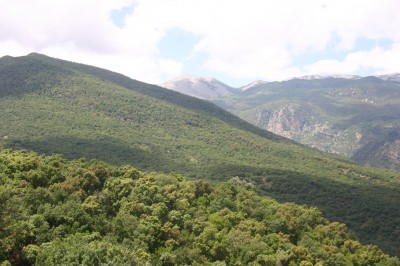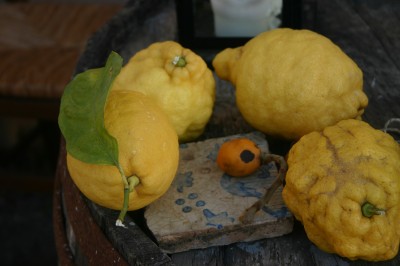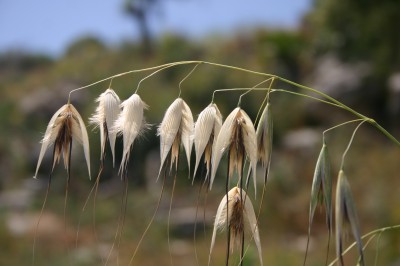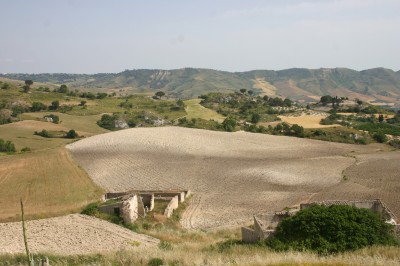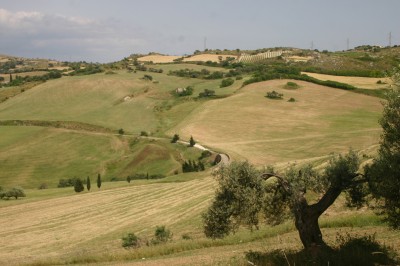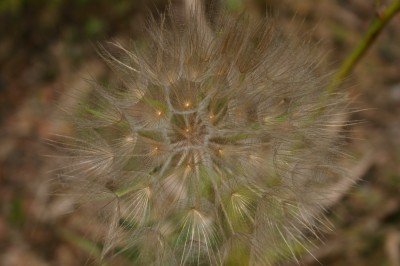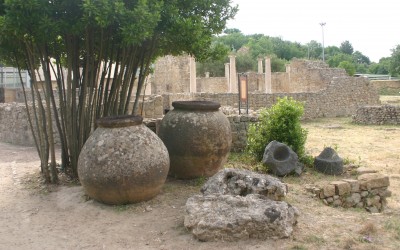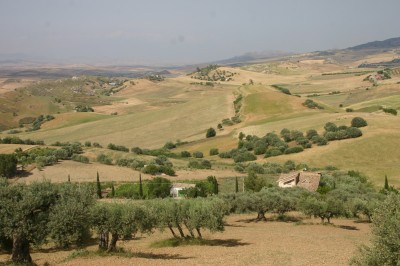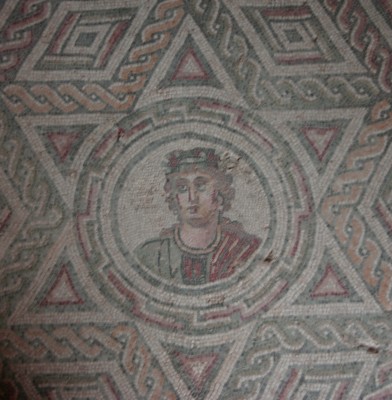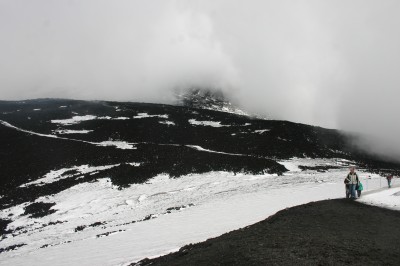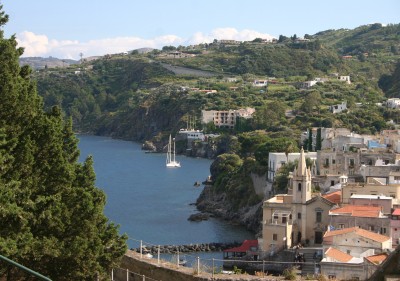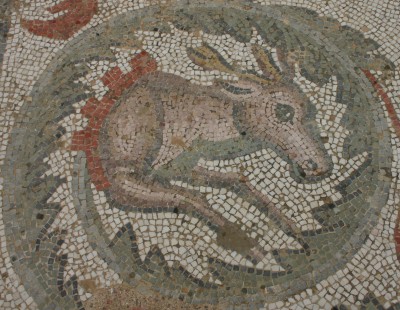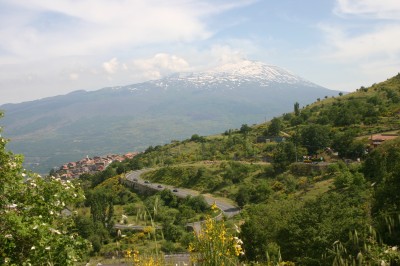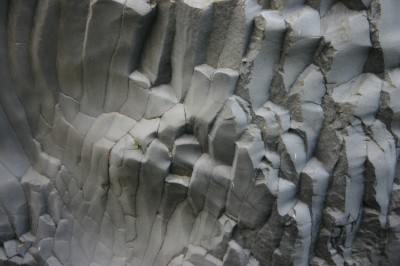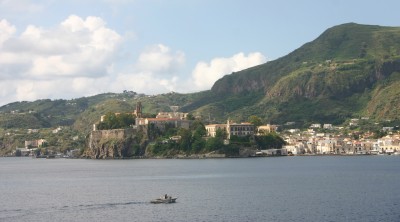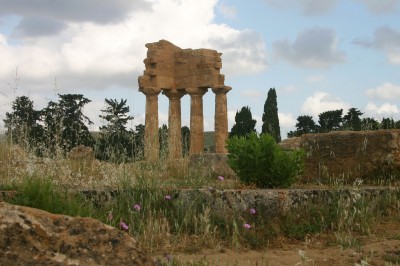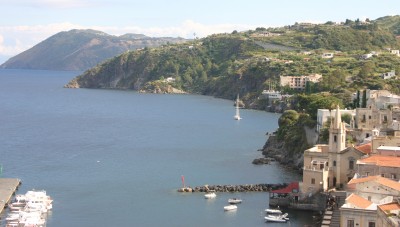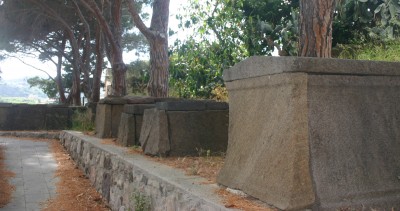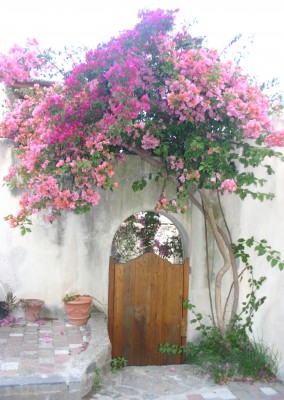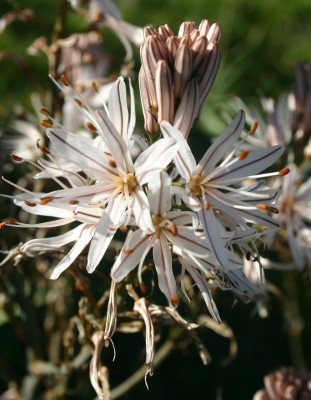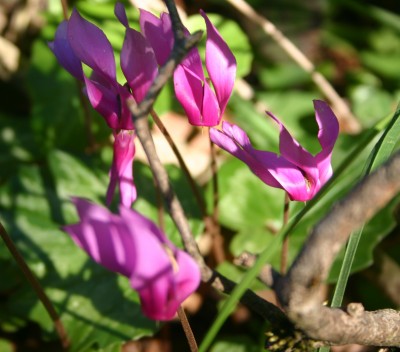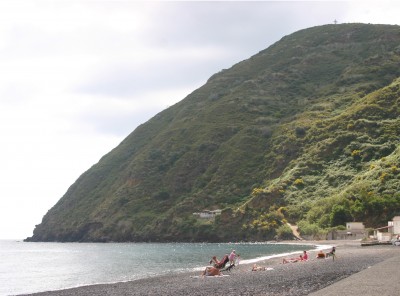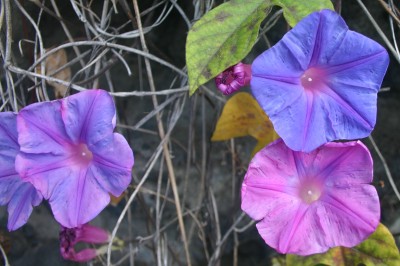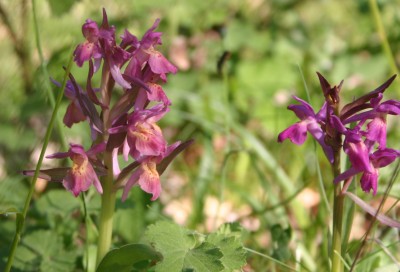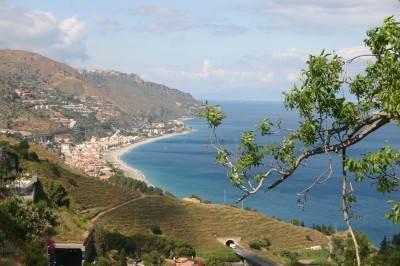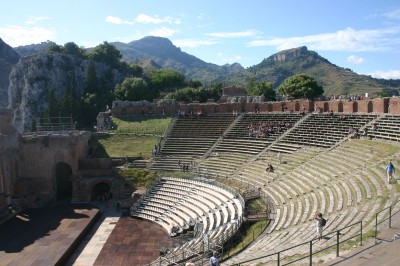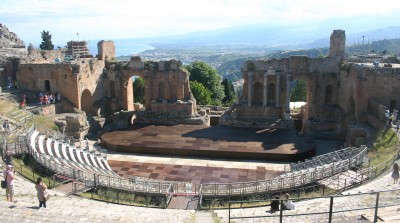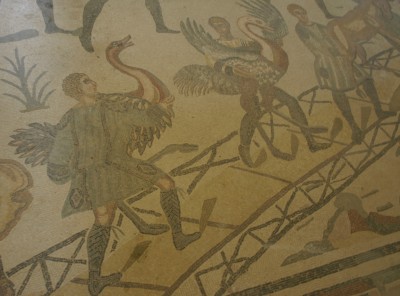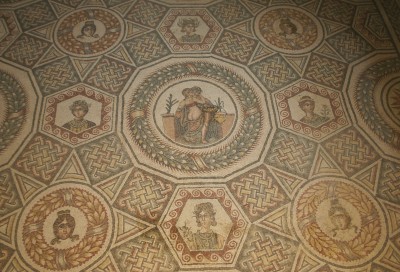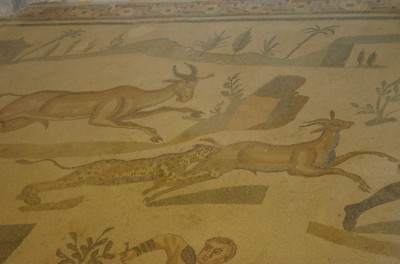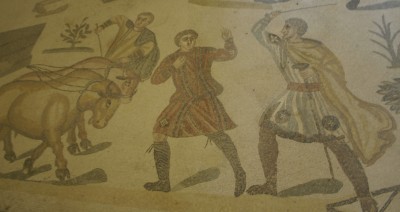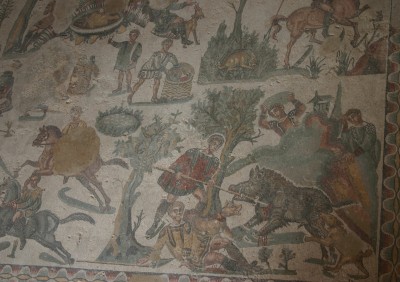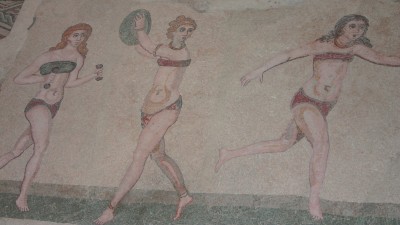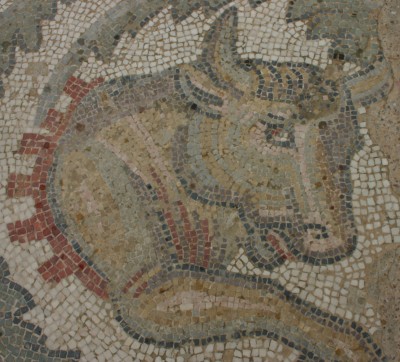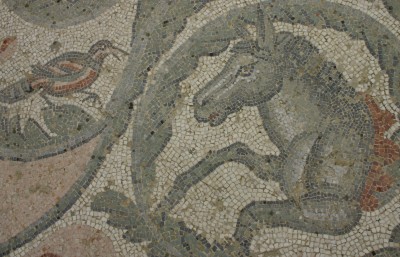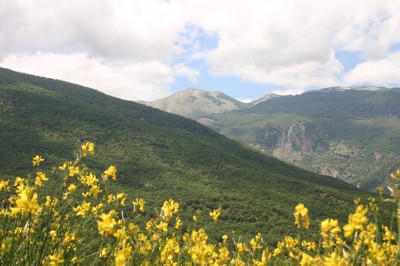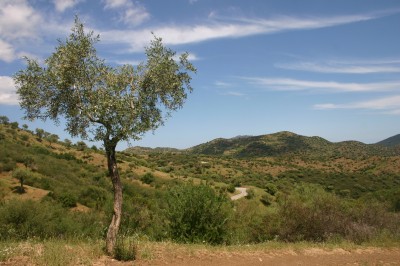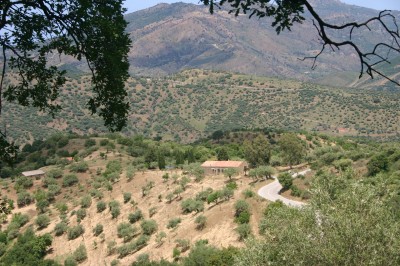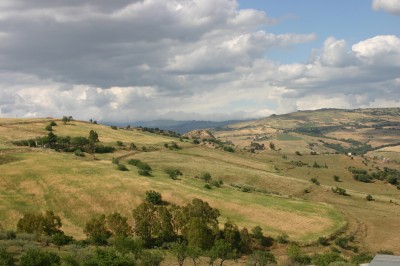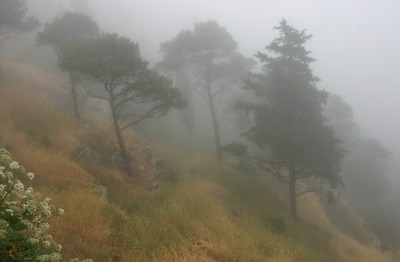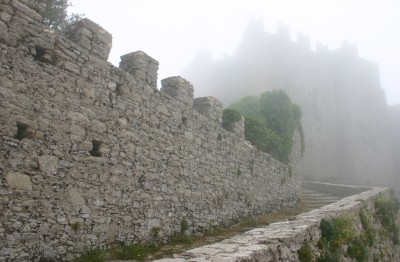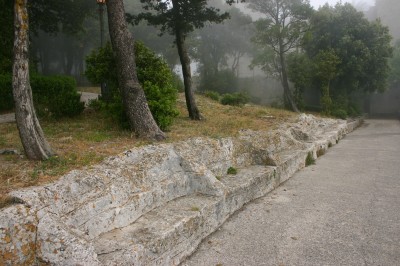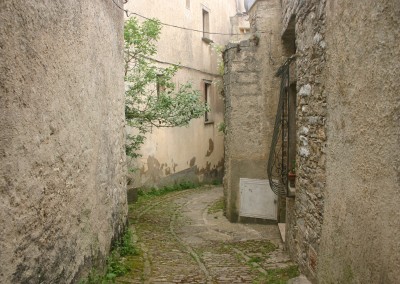Ah Sicily! Lemons, mountains, sunny days, fresh fish,
fog, gelato, greenery, Greeks, Romans and a whole lot of others, architecture
and the ever-present sea. I hope to see you again some day.
8 – Lasting impressions
Sicily Posted on 19 Jul, 2015 20:49- Comments(0) https://travels.insidestory.dk/?p=48
7 – Quiet moments
Sicily Posted on 17 Jul, 2015 17:52
Our ways part for a couple of days and a night so
while my friends stay on mainland Sicily I take the ferry to Lipari. This is a
beautiful little island, one of several volcanic islands north of Sicily. Small
islands have an ambience all their own and this one is no exception. Fishing
boats, yachts, a laidback atmosphere…as usual I just mosey around drinking it
all in. I discover a castle with archaeological goodies from Neolithic, Greek,
Roman and Byzantium times, including Greek sarcophagi lined up in the shade and
with stunning views of the water.
After I again meet up with my friends, we go for a
drive in the Nebrodi Mountains, part of which is a nature reserve. Pigs and
horses roam freely here, as do the cows, who wear bells. We enjoy the shade
offered by trees such as cork oak, elm, beech and ash and spot orchids,
delicate pink cyclamen and a marten. We pass babbling brooks and little
waterfalls.
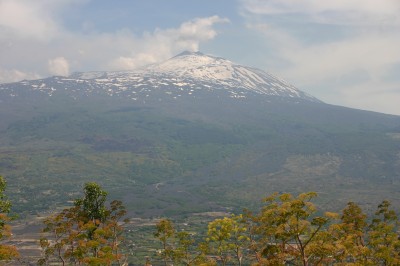

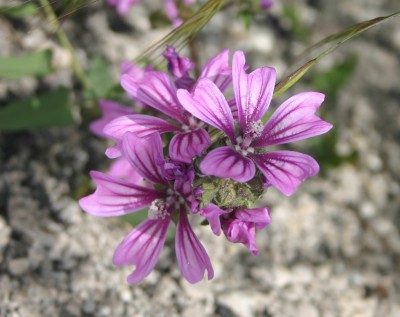
We get lots of good, clear views of Mount Etna from
its north side as well as lovely views of the landscape before heading back
towards Catania, from where we fly home. The last stop on our itinerary is to a
place called Alcantara, where there is waterfall and some rather odd cliffs
that look like they were modelled using strips of clay. I cannot resist taking
off my socks and shoes and wading into the icy cold water. Last chance before
returning to Denmark!
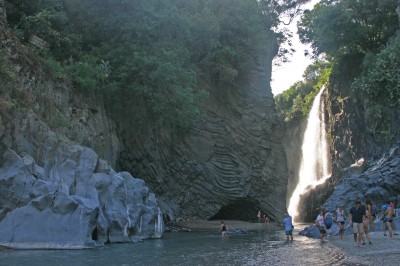
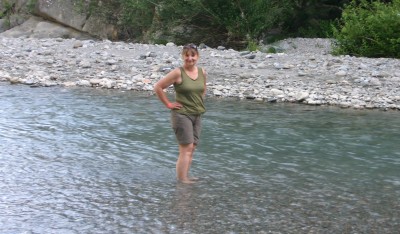
- Comments(0) https://travels.insidestory.dk/?p=49
6 – Now you see it now you don’t
Sicily Posted on 12 Jul, 2015 20:54We stay at the B&B Villa Maria Giovanna on the
outskirts of the small town Giardini Naxos, which is a short drive from the
pretty but touristy town of Taormina. Our B&B offers a sumptuous breakfast,
the elements of which our very friendly host describes to us in details. I fall
head over heels in love with the homemade lemon cookies.
In fact, I am pretty hooked on several of the lemony
delights of Sicily. They include the aperitif Limoncello (I simply must make
some myself at home), lemon marmalade (I’ve already made some with lemons I
brought home – huge success) and lemon ice cream (I’ve made some of that here
at home, too) and of course the lemons themselves – they are wonderfully
fragrant, cheerfully yellow, yummily sweet and rustically bumpy.
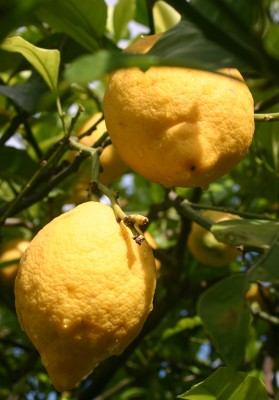
We sit down to breakfast outdoors with the snowy top
of volcanic Mount Etna as a backdrop. What a view to dine by! The sky is clear
and we can see the shape of the cone and the smoke that it emits. We look
forward to our excursion to the top of the volcano after breakfast.
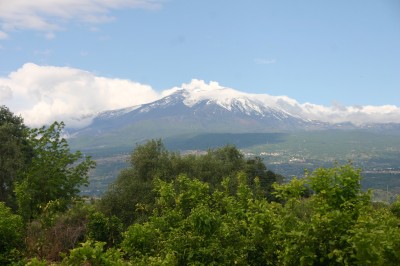
As it happens, we are bitterly disappointed. The
further we drive up in the mountain, the foggier it gets. It is my turn to
drive, and I am not particularly keen on driving on the winding road without
being too clear about what lies just a few metres ahead. Almost at the top of
the mountain, we park the car and take the cable car to go further up. It
squeaks and creaks as we rise in the eerie mist that prevents us from seeing
pretty much everything there is to see.
At the end of the ride, a special vehicle that can
drive in the rough terrain waits to take us up to the craters. At the end of
the ride, we get out and walk. It is pretty chilly up here and hard to see
anything, but we do see the five most recent craters and we bend down to feel the
warmth of the rock. How strange that snow lies on top of such a warm mountain!


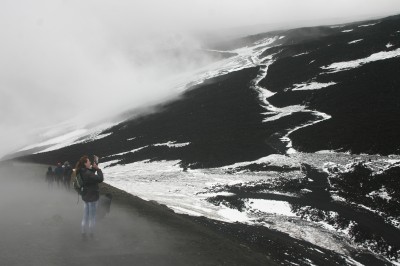
The next day we walk around Taormina – yet another
town that offers glorious views of the sea, ancient ruins and buildings and
lots of history. The Greek theatre from the third century BC. It was rebuilt by
the Romans in the first century AD, and this is mostly what stands today.
- Comments(0) https://travels.insidestory.dk/?p=50
5 – Mosaic marvel
Sicily Posted on 11 Jul, 2015 14:30
Our next highlight is the absolutely amazing Villa
Romana del Casale. Even if you are only moderately interested in mosaics, you
will be impressed by this place.
Sometime between the third and fourth century AD, a
rich Roman, possibly even Emperor Maximianus Herculius, built this magnificent
mansion in the fertile countryside close to the town of Piazza Armerina. The
architecture of the villa is in itself pretty amazing and includes rather
ingeniously designed spas, steam baths, saunas, cold baths, swimming pools, and
latrines in addition to a gymnasium, massage room, fountains, guest rooms,
bedrooms, halls, dining rooms, courtyards and servants’ quarters.
The most truly amazing features, though, are the
mosaics that cover an area of about 3500 square metres. It almost goes without
saying that this villa is a UNESCO World Heritage Site.
The mosaics depict all manner of scenes, from young
girls in bikinis practicing sports to extensive and detailed hunting scenes
showing the types of animals that were captured in India and Africa to be
brought home to the Romans, and from fishermen demonstrating four different
methods of fishing to illustrations of favourite Roman myths.
We are truly
gobsmacked by the high artistic level and the huge extent of it all. The man
who set all this in motion had exquisite taste and must certainly have been
very rich and powerful.
- Comments(0) https://travels.insidestory.dk/?p=51
4 – Architecture and nature
Sicily Posted on 10 Jul, 2015 14:24I meet my friends at the airport and after a good
night’s sleep we head south out of town. We catch a glimpse of Mount Etna but
save taking a closer look at the volcano for later. Our first stop as a
threesome is the Baroque town of Noto. The buildings are very ornate with lots
of curlicues, swirls and mythical figures. Fascinating but after a while
somewhat overwhelming.

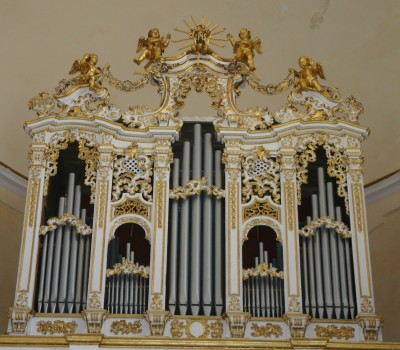
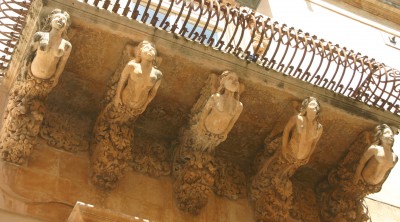
We then head for Syracuse, which oozes of history. It
was established in the 13th century BC and later became the cradle
of Greek civilisation in Sicily. Do you remember Archimedes? The brainy guy who
lowered himself into the bathtub and noticed that his body displaced the water
in an amount equal to the mass of his body? This scientific genius of the
ancient world came from Syracuse.
Syracuse is also famous for its large Greek amphitheatre that offers
beautiful views of the town and the sea.
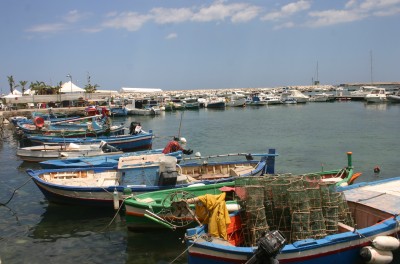
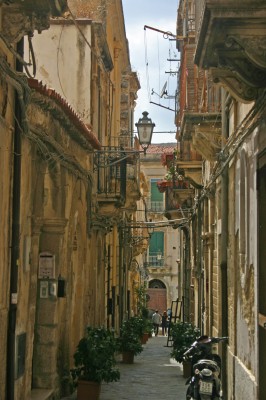
After the impressive architecture and ancient ruins of
Noto and Syracuse, we need a nature fix, so we drive to a nearby bird
sanctuary, where we spot lots of flamingos and herons.
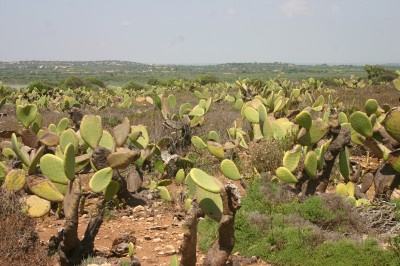
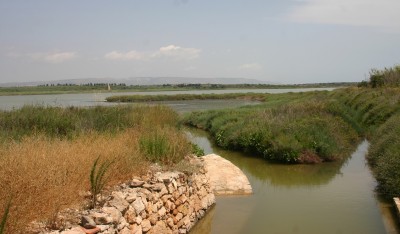
- Comments(0) https://travels.insidestory.dk/?p=52
3 – Heading for the hills
Sicily Posted on 09 Jul, 2015 20:15Cursing at myself for my hopeless inability to find a
place to drop the car in Cefalu, and fed up with cities, I head for the hills. Surely,
there is more elbowroom up in the mountain villages. I enjoy driving on the
winding mountain roads. I pass through several towns before stopping in
Nicosia, where I park (Yes! I found a spot!) and wander around.
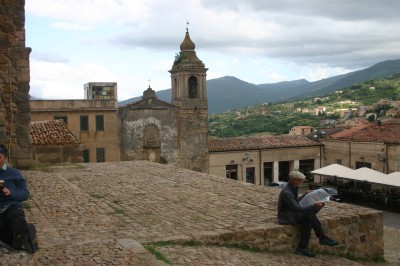

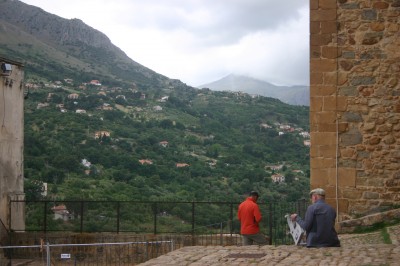
The views are pretty and it is nice to get lunch and a
cup of coffee, but after a while I have had enough of traffic noise and people
so I leave for the countryside in the Madonie mountain range. Here, I
occasionally stop by the side of the road and go for a walk, taking in the
mountain air and enjoying the peace and quiet. A cuckoo bird cuckoos, cowbells
ring, and lizards rustle in the grass.
This area has mountains second only to Mount Etna in
height. Although much of it is covered in forest, there are also wide swathes
of farmland with olive groves, lemon trees, and cereals. Although it is still
only May, the grain has already been harvested and the bales of straw are being
brought home.
It is soon time for me to drive back to the airport at
Catania to pick up a couple friends with whom I will spend the second week of
this May holiday. Many of the roads in Sicily are good. Signs with EU’s yellow
stars on a blue background are often prominent, which goes to show that Sicily
has been good at getting EU funding.
I choose not to travel on the sleek highways but
instead on the mountain bi-ways. They lead me up and down and around mountains,
and through villages that wrap themselves around the mountaintops. Each town
has a church and a town square. It is almost as if the size of the church is
inversely proportional to the size of the town.

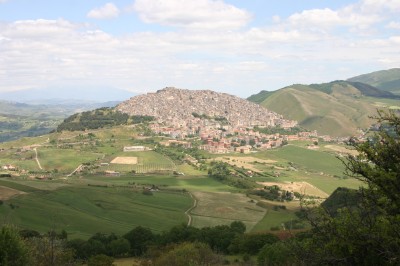
- Comments(0) https://travels.insidestory.dk/?p=53
2 – Town with no view
Sicily Posted on 08 Jul, 2015 22:30Next on my itinerary is the medieval town of
Erice. According to the guidebook, this is “a dramatically beautiful medieval
hill town”. I will have to take the book’s word for it, because the hill and
the town are so shrouded in fog that it is difficult to see anything at all.
The mist lends a mystical atmosphere to it all, but a cold and damp one. I
wander around aimlessly, letting myself get lost in the winding streets, and
admiring the patterns of the cobblestones in the narrow streets. This town is
made of thousands upon thousands of stones.
In these past few days, I have learned to be a more
aggressive driver and parker of cars. Otherwise, I would never survive the
Sicilian traffic. There are, however, certain challenges that are insurmountable
for me. One of these is finding a spot to park the car in the town of Cefalu. I
try on three different occasions, all of which entail either turning around in
the narrowest of dead-end spaces or reversing and driving backwards in the
narrowest of streets. I try to look cool and collected as my efforts are
watched by onlookers and local drivers.
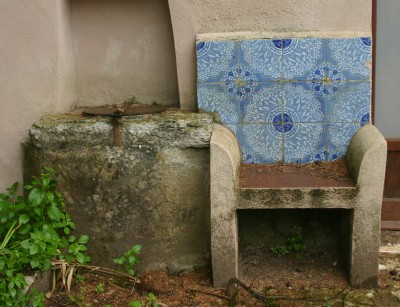
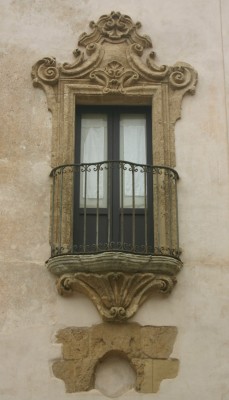
- Comments(0) https://travels.insidestory.dk/?p=54
1 – Spring in Sicily
Sicily Posted on 07 Jul, 2015 21:02Previously, when I thought of Sicily, the images that
came to mind were the mafia and Mount Etna. Now, after two weeks on that lovely
island in the Mediterranean, I can add more images: turquoise seascapes, hilly
green landscapes, fragrant lemon orchards – and many more pleasant impressions.

Sicily has a long and rich history that includes
Greeks, Romans, Arabs, Byzantines, Normans, French and Spanish. They all left
their mark in one way or another so aside from undulating agricultural
landscapes, alluring azure sea, verdant forests and smoking volcanos, there is plenty
to catch one’s interest.
Ruins with a view
I start my explorations of Sicily at the Valley of
Temples, the Greek ruins by Agrigento. This spot was apparently already an
organised settlement in 581 BC, but most of the magnificent temples are from
around 480-400 BC. Various non-friendly events involving Carthaginians, Greeks,
Corinthians, Romans, Saracens and Normans meant that the Valley of Temples
changed hands throughout the centuries. That was all very long ago but the
temples still stand, albeit as ruins with a fantastic view of the countryside.


Next stop is the harbour town of Sciacca on the southwest coast. I just meander about, enjoying looking at the fishing boats in the harbour and the narrow streets with their cheery tiles.
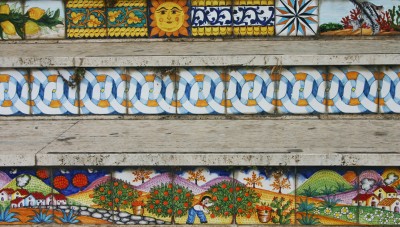
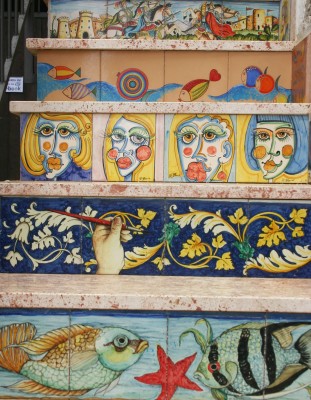
Mountains with a view
After Sciacca I make my way north to a miniscule
village called Scopello. It consists of two streets and a public fountain from
which I repeatedly fill my water bottle in the days I spend here. It is a cute
little village with good restaurants but the main draw is the nearby Zingaro
National Park. The park is only a couple of kilometres from the village, so I
walk the country road and visit the park twice. The park offers stunning views
of the sea from high above. An extra bonus is that I do not have to suffice
with looking longingly at the crystal clear sea – I can clamber down and bathe
in its coolness.
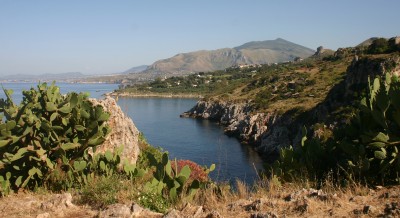
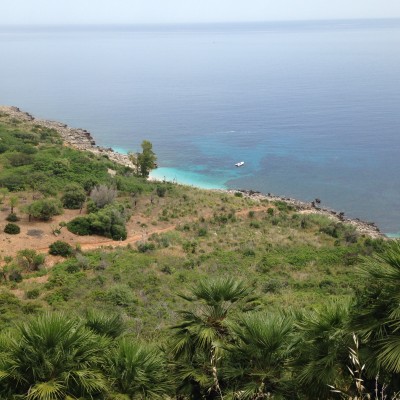
Along the hiking route are plenty of interesting
plants, many of which I do not recognise. However, there are many educational
signs giving the names of the plants and explaining their botany, characteristics
and uses.
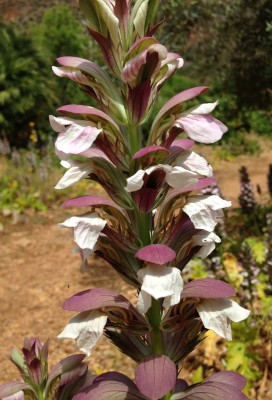

The walks provide me with sunshine, fresh air,
exercise and knowledge. What more can a girl ask for? Well, company, I suppose,
but I get that too, because along the way I meet a girl from Syracuse who is
biking all the way around Sicily. From time to time, we walk and talk together
and at other times our ways part. I also meet nifty little lizards constantly.
A couple of small museums in the park demonstrate traditional mountain life and
mountain farming.

- Comments(0) https://travels.insidestory.dk/?p=55

